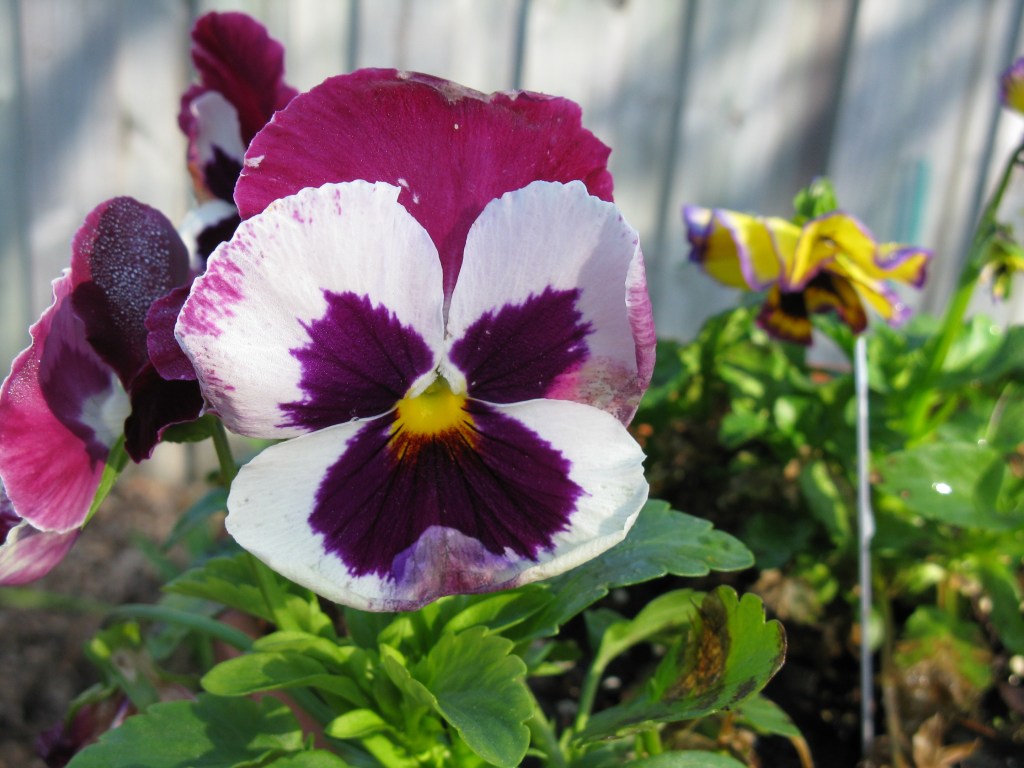Question: I planted pansies in the fall in my north garden. When can I add it to my Florida garden or container?
Answer: Pansy season is finally here. These smiling flowers and the monochromatic flowers of the Viola family require a cool climate and can tolerate freezing. November to early February is the best time to add them to your garden or containers. In fact, all types of violas decline in March when consistently warm to hot weather returns, so the sooner the better.
Q. I lost part of my lawn to chin bugs this summer. Do I need to add sand or composted manure to the ground before resurfacing?
A. The best benefit for your property and new lawn is to till the soil a few inches deep before re-turfing. Loosening the soil allows the top layer of sand and organic matter to mix together, providing a uniform planting site. It also helps disperse pest problems. You only need to add sand if you need to level the soil or fill in ruts. Adding organic matter such as composted cow manure to a typical Florida sandy soil is fine, but it will break down very quickly. Perhaps organic matter can help keep the soil moist and provide nutrients for short periods of time, but it is usually not needed.

Q. Our pest control company is having trouble getting rid of insecticide-resistant types of chinch bugs. Is this true?
A. Unfortunately, chinch bugs are out of control in some areas. Currently, the University of Florida and local pest control companies are reporting that these pests are occurring in small areas. In recent years, chinch bugs that are resistant to insecticides have emerged in some areas and can now be controlled by switching insecticides. But lately this doesn’t work in some areas. Researchers at the University of Florida and pest control companies are developing various forms of insecticides in an effort to control them. Products are used to inhibit the growth of chinch bugs or to prevent them from feeding. Some require you to apply more frequently and may cost more. Chinchbug-resistant St. Augustine is not available at this time.
Q. I just planted a new crape myrtle. When should I apply fertilizer?
A. The next fertilization of all crape myrtles will be postponed until mid-to-late February. These shrub and tree forms are in a dormant period where you don’t want to promote growth. Crape myrtle, which produces new shoots and new leaves, is susceptible to the effects of winter cold. Apply a slow-release landscape fertilizer according to label directions in late February or March, just before new growth begins. Then, please apply again in late May.
Q. Our gardenias were beautiful this year, but we need to prune them a little to reduce growth and make the plants a little rounder. Is it too late to trim?
Botanist: Don’t covet yellow-flowering trees in older areas
A. It’s late, so pruning at this time may affect spring flowering. Optimal pruning is carried out after flowering until early October. If there are some out-of-range shoots or branches that get in the way of caring for the plant, they may be shortened or removed. Otherwise, it’s best to enjoy the spring boom and then do more restrictive pruning.
Q. I sow eggplant seeds in late August and have grown nice-looking seedlings. Someone said that it only bears fruit during the spring. Is this true?
A. Eggplants grow and produce fruit just like their relatives tomatoes and peppers. They produce good-looking plants, flowering and fruiting in the spring and fall. These vegetables are limited by temperature from producing good fruit for several months. Production is best when temperatures range from 55 to 85 degrees. The plants are flowering now and the fruit should be ready in a month or so. Plants are also affected by frost and freeze and decline.
Q. My philodendron branches are overgrown. If I cut my plant back, can I expect new shoots to continue growing?
A. Once the main shoot is removed, the philodendron should send out some new shoots. Leave at least a foot or so of stem to start new growth. Depending on how far back the plant is pruned, it may take 1-2 months for new buds to mature and open. You can also root the top part if you wish. Many gardeners have had success growing more philodendrons by sticking the stems in the ground or into containers with soil and keeping them moist.

Q. Even though it hasn’t rained much, there seem to be a lot of mushrooms growing on my lawn. Is this unusual?
A. Rainfall is variable from late spring to early fall, but all regions seem to receive enough moisture to stimulate mushroom production. These above-ground structures are the fruiting bodies of fungi that have grown underground. This fungus often grows on the rotten remaining roots of trees and shrubs that were once in the area. Mushrooms can also grow from underground organic sources. Once the fungus is established, it will send out more fruiting bodies during the warm to hot and humid seasons. As long as organic matter is present, the fungus can continue to grow for years. These fruiting bodies can be poisonous, so it’s best to remove them if you notice them in areas frequented by children or pets.
Tom McCubbin is an emeritus urban horticulturist for the University of Florida Cooperative Extension Service. Write to Orlando Sentinel, PO Box 2833, Orlando, FL 32802. Email: TomMac1996@aol.com.

